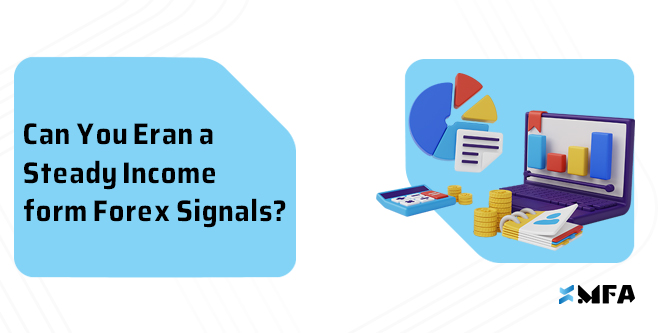Introduction: In a Sea of Signals, Which One Can You Trust?
Everywhere you look — Telegram channels, trading groups, Instagram pages — people are giving forex signals.
But here’s the real question: Which of them are truly reliable?
And more importantly, how do you evaluate them without getting burned?
In this article, you’ll discover the 6 key factors to assess a signal provider’s credibility and learn why MFA’s signal system is considered one of the most professional and transparent in the market.
1. Does the Signal Include Proper Analysis?
A reliable signal must do more than give numbers. It should clearly explain:
• Why the trade is being suggested
• The technical or fundamental logic behind the setup
• What happens if the market moves against the position
Warning sign: If all you get is entry/TP/SL numbers with no context, you’re not being guided — you’re being pushed.
2. Are the Signal Results Transparent and Honest?
A professional provider will always show:
• Both wins and losses
• A verified journal or track record
• Honest stats and realistic expectations
Red flags:
• Claims like “95% accuracy” without proof
• Only sharing screenshots of winning trades
• Deleting or hiding losing signals
MFA logs and explains every trade — success or failure — with transparency.
3. Is Risk Management Clearly Defined?
Every reliable signal should guide you on:
• Suggested position size or risk level
• Risk-to-reward ratio (e.g., 1:2 or better)
• Stop-loss placement based on market logic
If the signal says “manage risk yourself” or provides no SL → that’s dangerous.
4. Is the Signal Released at a Logical Time?
Timing matters.
There’s a big difference between:
• A signal planned hours before a CPI news event
• A signal sent during peak volatility with no context
Professional signals respect:
• Market structure
• News flow
• Volatility zones
MFA adjusts entries based on upcoming data, trend shifts, and trader safety.
5. Are Trade Updates and Post-Signal Reports Provided?
A reliable provider will:
• Share live updates (when to hold, exit, or re-enter)
• Explain the outcome of the trade
• Adjust signals when market conditions change
MFA sends post-trade analysis, real-time updates, and clear follow-up actions.
6. Is It Based on Both Technical and Fundamental Analysis?
A signal that ignores economic context is incomplete.
A professional forex signal includes:
• Strong chart structure: trends, zones, confirmations
• Macro context: interest rates, CPI, NFP, central bank tone
MFA uses dual-layer analysis — technical precision + economic awareness — for every trade.
Why MFA Signals Are Trusted by Pro Traders
MFA’s system is built around 4 essential components:
1. Fundamental Data: CPI, NFP, central bank updates
2. Technical Setup: Clear entries, exits, stop zones
3. Risk Management: Defined R/R, safe sizing, low drawdown
4. Support & Transparency: Real-time signal updates and post-trade follow-through
You don’t just receive a trade — you get a full strategy with logic and structure.
FAQs
Q: Can a signal without analysis still work?
Sometimes — but it won’t last. Without understanding the why, consistency is impossible.
Q: How do I spot fake profit claims?
Look for full trade history, not just cherry-picked screenshots.
Q: Are MFA signals perfect?
No system is. But MFA’s advantage is in clarity, honesty, and controlled risk — even during losses.
Conclusion: A Signal Is Only as Good as Its Logic
In a crowded signal market, don’t chase hype — chase structure.
Ask:
• Is this signal logical?
• Can I learn from it?
• Does it help me grow as a trader?
With MFA, every signal is a guided opportunity — not a gamble.
Trade smart. Question everything. Trust systems that teach you — not just feed you.

